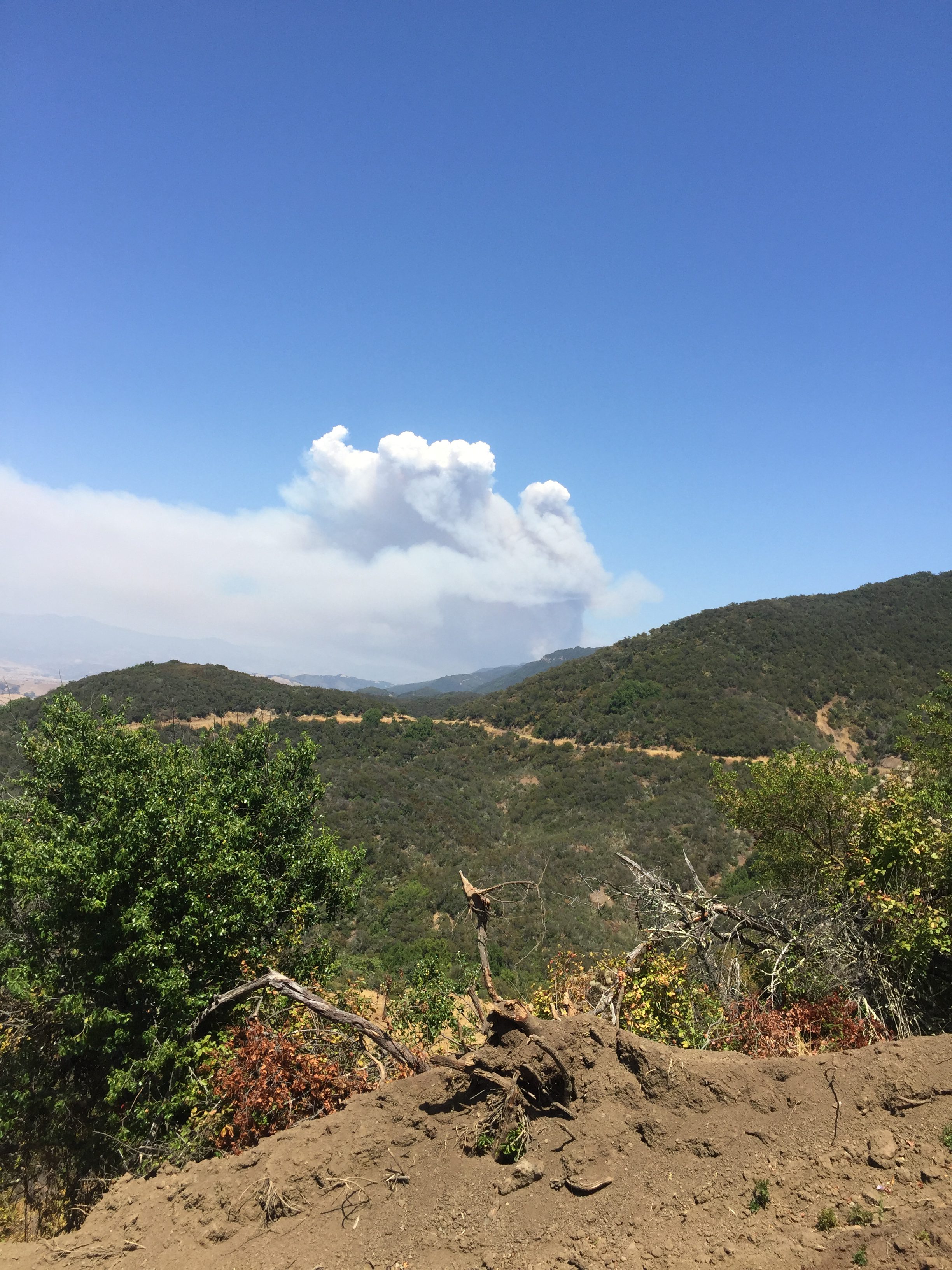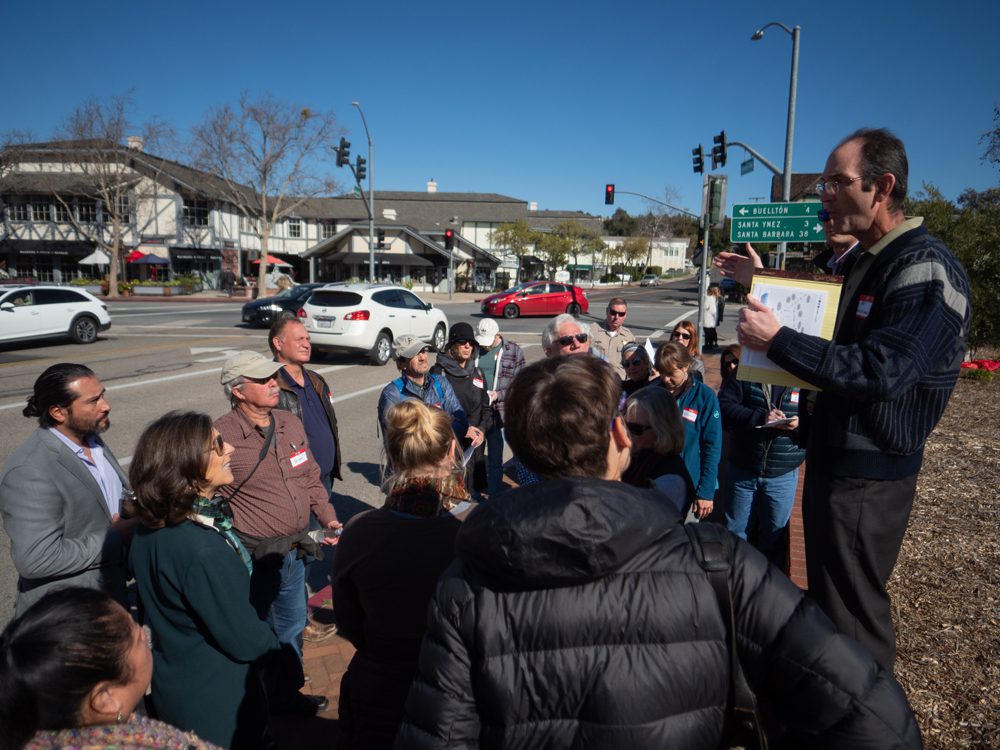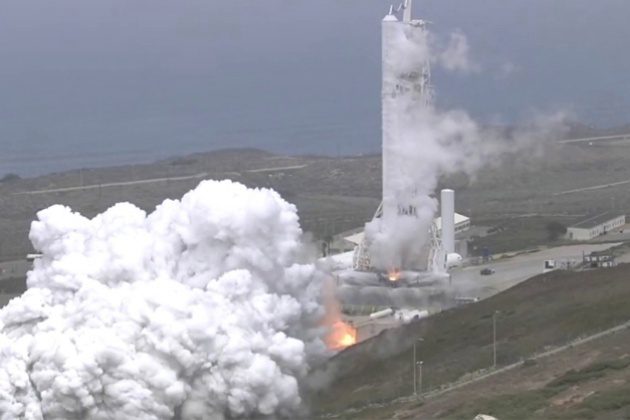Fire used to be a tool, not a threat
The second in a series of articles on fire in our area published in the September 2016 issue of the Santa Ynez Valley Star
By Bill Giorgi
Before man arrived to influence our environment, lightning strikes on our inland mountain ranges like Big Pine Mountain produced naturally occurring fires once every 13 years on average, as evidence from tree rings shows.
These naturally occurring fires would keep the brush cleaned out from under the conifer trees so that they wouldn’t be destroyed in large fires. How much these naturally occurring fires would spread throughout the brushy areas of our inland mountains, and if they extended to the coastal ranges, can only be speculated on. In the right conditions they probably burned for months.
This was the environment when man arrived some 150,000 years ago, or maybe even longer now from the latest evidence being gathered on pre-historic man. It was probably cooler and wetter after the Ice Age, and gradually evolved into our current climate.
At first there were just a few humans. Hunter-gatherers (Oak Grove people). Other cultures came in and replaced the first ones here (Hunting Group and Chumash). The populations in our area grew to one of the densest in North America. There was fierce competition between tribes for the resources needed to survive, especially in times of drought.
Imagine yourself in this time period. You get up in the morning and you are hungry and thirsty. Hey, guess what, no fridge, no running water, no microwave, no freezer, no cans or boxes in the pantry, no fast food joints or coffee shops, and no pizza delivery man.
The Native Americans depended on the environment to survive. They were dependent on many seeds, grasses, bulbs, roots, animals like deer and rabbits, and food from the ocean to survive.
It was hard to store these resources too, without electricity or Glad bags. Acorns usually produce a good crop on the average of only once every five years, so they probably weren’t the big staple crop like a lot of us thought. While they could be stored for awhile, just imagine all the forest critters and insects that would try to help themselves to them.
It must have been fun arguing with a great California Brown Bear when he came by to share your dinner and wanted to dine on acorns or, worse yet, you.
When the Spanish first arrived, providing us with our first written records, they observed several things. One was that the Native Americans in our area didn’t carry on agricultural operations to survive like cultures with dense populations had in many other areas of the world. Intensified agricultural operations are usually needed to support dense populations.
Another observation was the Native Americans in our coastal area used fire to modify the habitat so that it was productive to the greatest extent possible. Was this their form of agriculture? Did they burn areas when needed so that the habitat was in the best condition possible? The Spanish observed burnt areas, running streams with fish, deer and elk, but no mention of brush.
The fact that the local Native Americans were so successful at managing our local resources probably explains why they didn’t have to develop agriculture to support their dense populations. In fact, it is claimed that in Southern California there was a religion that rewarded knowledge of how to increase plant and animal food supplies.
So now you are thrown back in time and are hungry and thirsty. Look outside at the mountains and try to imagine yourself in that environment like our local Native Americans were.
You weren’t wearing much in the way of clothing. Would you be able to travel through the thick chaparral and sage scrub we have today without hurting yourself? Would you be able to see the predators lying in wait like rattlesnakes, bears, and mountain lions? Would you be able to see your breakfast in the thick brush?
Was the thick, undisturbed brush the best habitat for the plants and animals you relied on to provide you with food, shelter, safe travel, water, and other things? In times of drought would you be able to see enemies from other tribes who may have come looking to steal your scarce food supplies?
After spending some time outdoors and viewing where fire has burned several years before, it is easy to conclude that burning would do many things to improve the life of the Native Americans. It would improve their ability to travel, improve habitat and bio-diversity, increase seed, bulb, and fruit production, and increase water resources, deer numbers, and the whole eco-system.
Native American burning of the habitat in the California coastal ranges was not unique, as Native Americans throughout North America used burning for a multitude of land management activities. These practices were followed by the Euro-American settlers.
If you look back in the old records of the Santa Barbara News-Press, it had a historical section that showed under the 75 and 100 years ago today in the summer months, you would frequently see, “fire burning in the back country.” It was a common statement like it was an expected event that just naturally happened and nobody paid much attention to it, nor could they do much about stopping the fires. They were used to improve the habitat.
So this is what was up until 200 years ago, when the first no-burn policy was declared by the captain of the Presidio in Santa Barbara when he proclaimed that they were going to hang all these crazy Indians who start these fires every year. We had frequent, low-intensity fires.
How much has Smokey the Bear and no-burn policies changed our landscape over the years by creating a sense in the general public that all fires are bad? How much have the grasslands that were part of our environment the last 10,000 or so years reverted back to decadent, dense shrub land (brush)?
Is that why we don’t see the native bunch grasses anymore? Is that why there are so many endangered plants and animals? What is our Forest Service doing to manage our public lands, which are slightly over 50 percent of Santa Barbara County? I am sure you are just as concerned and interested as I am to find out. That is what we will explore next.
Come journey with me in the next issue of the Santa Ynez Valley Star to find out.
Bill Giorgi is a Buellton farmer and rancher.







